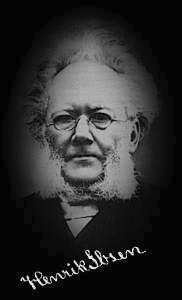
Henrik Ibsen's dramas can be placed in two main categories: The youth dramas and historical dramas from 1850 to 1873, and the contemporary dramas from 1877 to 1899. From the first period the most famous piece is "Peer Gynt" (1867). Ibsen described this as a "dramatic poem", a drama to be read. It was not intended as a play, yet it has become one of his most played and popular stage dramas. The twelve plays published from 1877 to 1899 are almost continuously found in the repertoires all over the world even today. First among these, "Pillars of Society" (1877), "A Doll's House" (1879), "Ghosts" (1881) and "An Enemy of the People" (1882) were mostly critical of society. The next plays, "The Wild Duck" (1884), "Rosmersholm" (1886), "The Lady From the Sea" (1888), "Hedda Gabler" (1890), "The Master Builder" (1892), "Little Eyolf" (1894) and "John Gabriel Borkman (1896) dealt more with psychological conflicts. So, in a way, did his last play, "When We Dead Awaken" (1899), which also stands out with its more symbolistic and non-realistic form.
Many of Ibsen's dramas were premiered abroad, in part because Norwegian theatres did not believe in them or have the courage to introduce them to the public. The first Norwegian theatres to play Ibsen were Christiania Theater (which had the very first of all Ibsen premiers, "The Warrior's Barrow", in 1850) and Det Norske Theater (The Norwegian Theater) in Bergen, where Ibsen himself was a stage director and dramaturge until 1857. (Five of his youth dramas were premiered in Bergen during this period.)
When the National Theatre opened in 1899, taking over the role of Christiania Theater as the main national stage, Ibsen's dramas became a natural and important part of the repertoire from the start. "An Enemy of the People" was one of the opening performances of the National Theatre, premiered September 2, 1899. The theatre has staged 22 of Ibsen's 25 plays, most in several versions. "Peer Gynt" and "A Doll's House" are among the Theatre's most played.
The National Theatre's photo collection contains picture documentation of most of their Ibsen performances through its first century. Starting with performance photographs from 1903(?) all the way up to 1961, we present all of Henrik Ibsen's plays the way that the audience of the Norwegian National Theatre saw them on the stage.